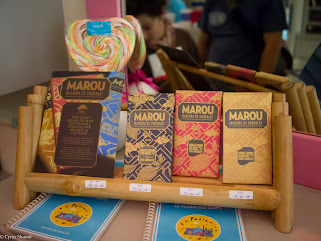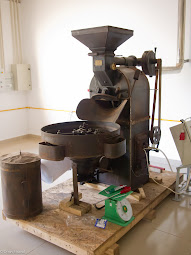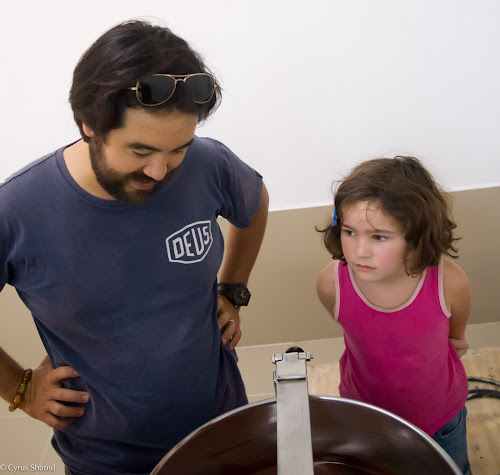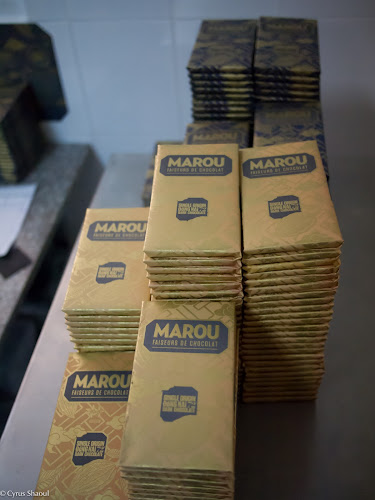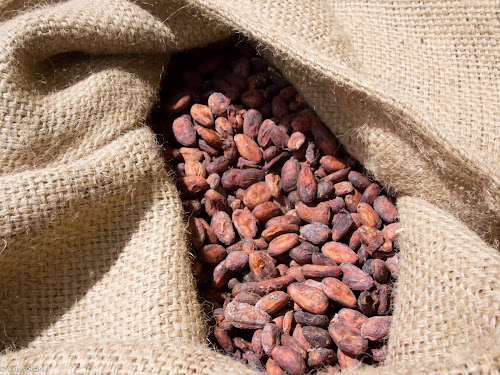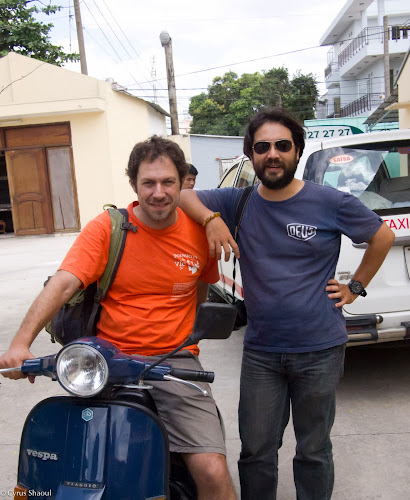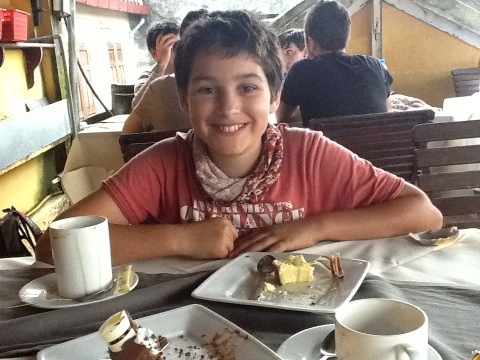Madagascar grows some of the best cocoa in the world and Ambanja is where it all comes from. It’s on the northwest part of the island and we went there on Sunday to visit a few plantations. Two technicians from the American chocolate company Madecasse took us to two farms and explained the harvesting, fermenting and drying process.
What struck me most was how labor intensive this work of cocoa processing was. We didn’t see the harvesting, but the job of fermenting the beans looked back breaking. It takes 5 days to ferment beans properly and they need to be turned often and moved from one fermentation bin to another. At this point the beans are moist and heavy. Once the fermentation is done, the beans go outside to dry. The workers have to put the still wet beans into large burlap sacks to transport them to the drying area. The beans are first dried on cement and then moved to drying racks that are wheeled in and out of the sun over a period of 7 days. They then need to be sorted and bad beans need to be picked out. Only the good beans are made into the Madecasse bars.
Frederic and Elli (full name: Elian Guy Randrimihazja) picked us up from the port of Ankify and drove us into the town of Ambanja which is the commercial centre of the Sambinaro Valley region. It was incredibly hot and humid, and we were all wilting. We checked into a simple motel in town called the Palma Nova and then drove out to this first farm called the Mangabe family farm. This farm is a traditional Malagache family farm, with all the work being done by an extended family and neighbours. The proprietor of the farm is Mr. Lalatina Mangabe, shown in the group photo with us. He and his wife Dauria and their daughter Karen live and work on the farm. Their plantation contains the usual mix of cacao varieties that makes Madagascar cacao special: criollo, trinitario and a little forastero. As we walked through the grove of cacao trees, Frederic explained how there a mix of beans in each pod. He opened a pod and sliced through a bean for us, showing us the creamy coloured interior of a criollo type bean. In the same pod, he cut through another bean that was dark purple, a more forastero type. Before the Mangabe farm started working with Madecasse, they did not really pay too much attention to post-harvest processing: short fermentation, short, haphazard drying.
Madecasse has partnered with the Mangabe farm to help them improve their cacao by helping them acquire drying trays, building a better fermentation system and building a storage room for the drying trays. These simple additions to the farm have made an enormous difference to the quality of the cacao that the Mangabe family can produce. In addition to the investment in equipment, the team from Madecasse visit the farm every day of the week, sometimes bringing up to 10 extra labourers with them to help the Mangabe family ferment, dry and sort the beans. Without this extra support it would be very difficult for the family to follow the exacting regimen that is required to make great cacao. Forgetting to turn the beans one day, or keeping the drying beans in the storage room , out of the sun, for too long, will make the beans unusable, so the attention to detail is key. As we learned about all this work, it really hit home how difficult it is to create the quality that we taste in Madecasse chocolate. I think I will savour the chocolate even more than usual next time I eat one (which may be for a while!) because I will be imagining the faces all the people who worked so hard to make these bars a reality. A lot of people throw around the term “bean-to-bar”, but when you feel connected to the earth where the cacao trees grow and the family growing the cacao, it is a whole different ballgame.
After we had a snack of jackfruit with Frederic and Elli, we drove to the second farm supplying Madecasse with beans, called the Cokafa co-operative. It was a little different from our first experience: we drove right through a village of about 1000 people and pulled up at a fenced-in drying deck. Cokafa is a co-operative that is part of the village of Antrankarana, about 20 minutes drive from Ambanja. This is a new project for Madecasse, about 3 months old, and 12 families in this village have joined the cooperative and are contributing beans so far. They hope to add 15 more families in the near future. Madecasse has helped the cooperative build a better fermentation system and drying trays. We met with the vice-president of the co-operative, Mr. Jean Bathelemi, and as we looked on, Frederic and Elli checked on the progress of the fermentation and drying.
Our thanks go out to the team at Madecasse (USA), Michael, Frederic and Elli (Madagascar). We really appreciate all the time and effort they provided to help us see how the cacao growers of the Sambirano Valley make great cacao.
Here is a gallery of photos from our visit. Captions are provided under each picture, so click on the gallery to get started!

Click here to see all the images.
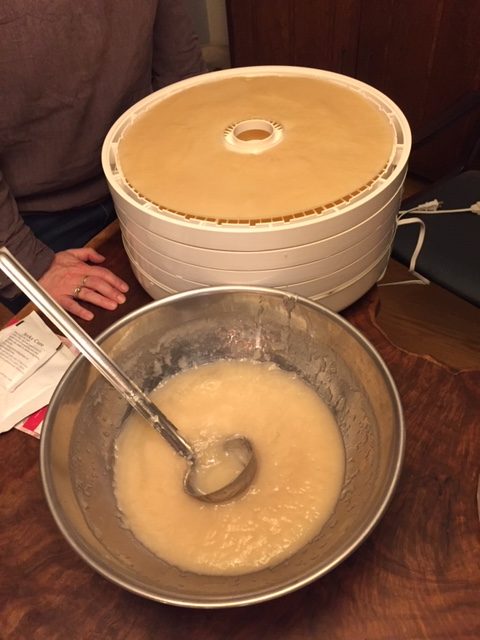
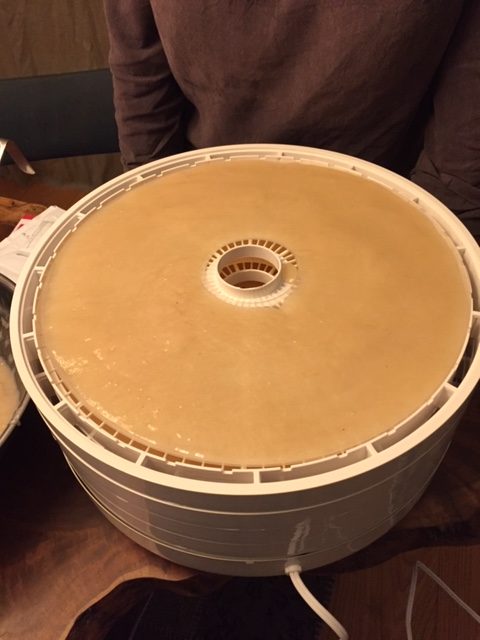
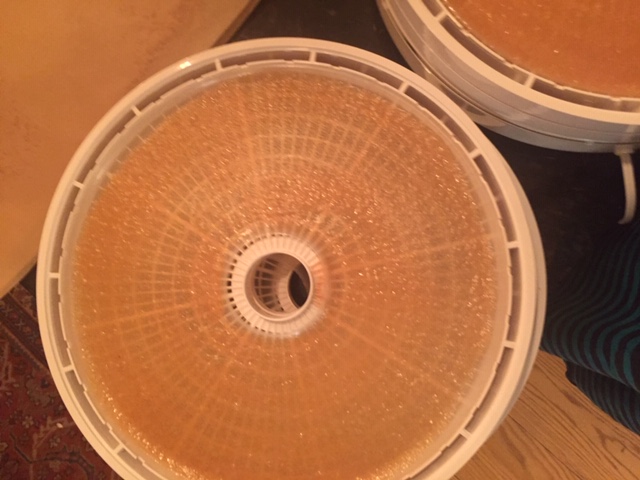

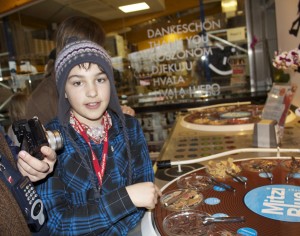
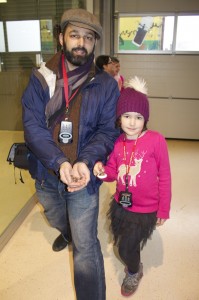
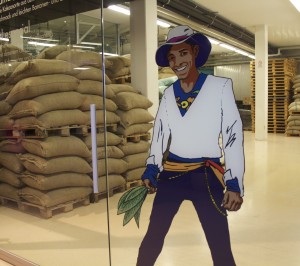
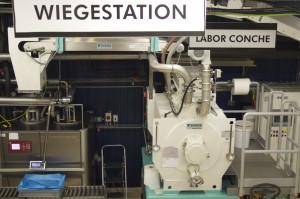
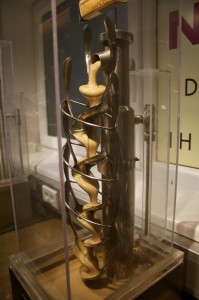
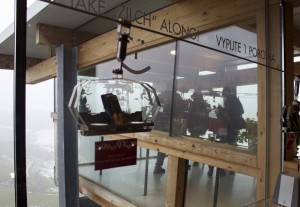
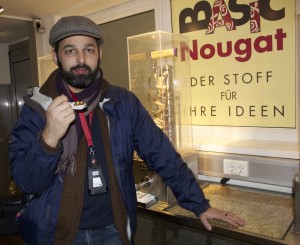
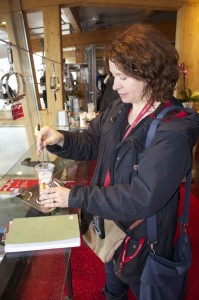
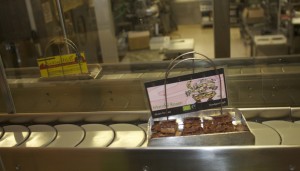
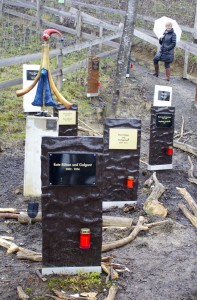
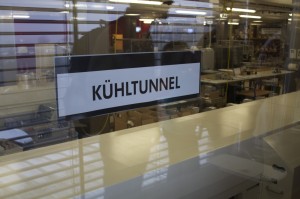
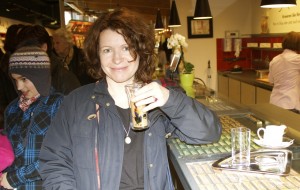

















































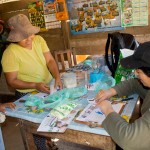










 It was getting quite dark now and the kids were bored and hungry. Luckily dinner was ready. Herminia cooked us a wonderful fish dinner. One for each of us! They declined to join us for dinner because they had friends visiting later and wanted to eat with them. I felt bad eating my whole fish in front of the family, but I was starving and the fish was delicious and that overrode all sense of propriety.
It was getting quite dark now and the kids were bored and hungry. Luckily dinner was ready. Herminia cooked us a wonderful fish dinner. One for each of us! They declined to join us for dinner because they had friends visiting later and wanted to eat with them. I felt bad eating my whole fish in front of the family, but I was starving and the fish was delicious and that overrode all sense of propriety.









